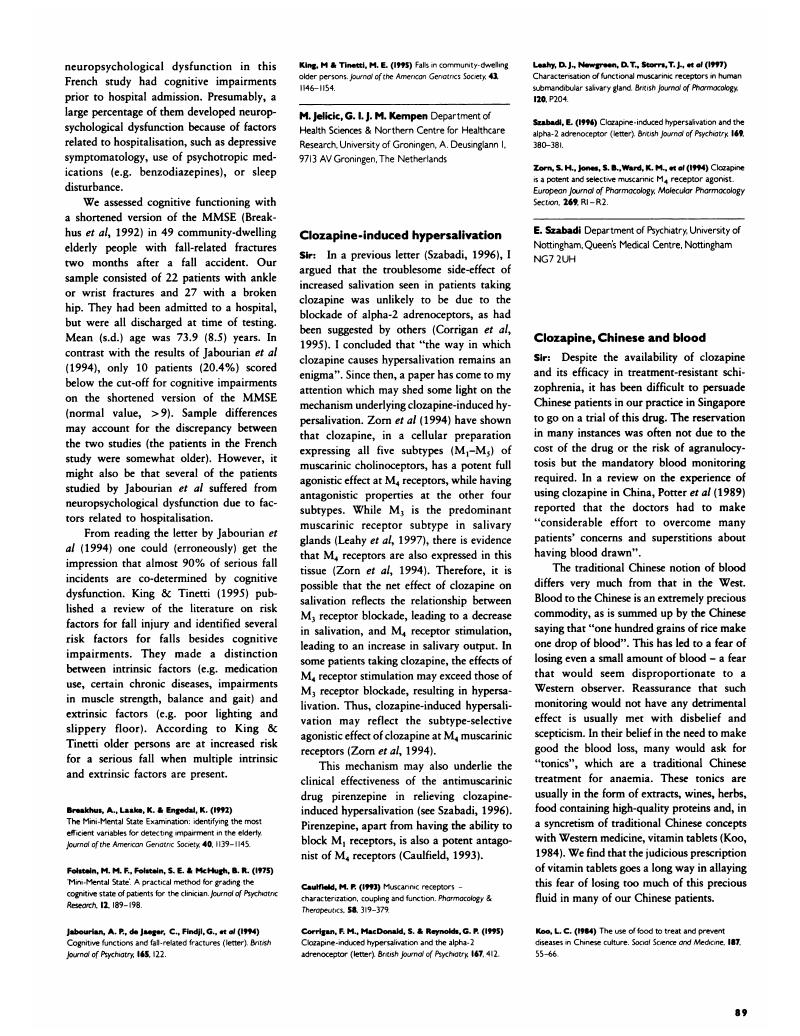Crossref Citations
This article has been cited by the following publications. This list is generated based on data provided by Crossref.
Carvajal, Alfonso
and
Martín Arias, Luis H.
1999.
Vol. 22,
Issue. ,
p.
45.
Davydov, Liya
and
Botts, Sheila R
2000.
Clozapine-Induced Hypersalivation.
Annals of Pharmacotherapy,
Vol. 34,
Issue. 5,
p.
662.
Licht, R. W.
Bysted, M.
and
Christensen, H.
2001.
Fixed-dosed risperidone in mania: an open experimental trial.
International Clinical Psychopharmacology,
Vol. 16,
Issue. 2,
p.
103.
Gajwani, Prashant
Franco-Bronson, Kathleen
and
Tesar, George E.
2001.
Risperidone-Induced Sialorrhea.
Psychosomatics,
Vol. 42,
Issue. 3,
p.
276.
Iqbal, Mohammad Masud
Aneja, Alka
Rahman, Atiq
Megna, James L
Yasmin, Laila
Schwartz, Thomas L
Osmany, Saabry
and
Alam, Mohammed Adnan
2004.
Therapeutic Options in the Treatment of Clozapine-Induced Adverse Effects.
Journal of Pharmacy Technology,
Vol. 20,
Issue. 3,
p.
155.
2006.
Meyler's Side Effects of Drugs: The International Encyclopedia of Adverse Drug Reactions and Interactions.
p.
823.
2009.
Meyler's Side Effects of Psychiatric Drugs.
p.
185.
2016.
Meyler's Side Effects of Drugs.
p.
443.
2016.
Meyler's Side Effects of Drugs.
p.
297.
Şahan, Ebru
Kılıçarslan, Tezer
and
Kırpınar, İsmet
2019.
Sialorrhoea associated with sertraline use.
Scottish Medical Journal,
Vol. 64,
Issue. 4,
p.
159.
Halder, Ankit
Ravindran, Navna Panchami
Nagda, Parth
Harshe, Devavrat
and
Harshe, Gurudas
2023.
Review of Psychotropic Agents Associated with Sialorrhoea, Except Clozapine.
Indian Journal of Psychological Medicine,
Vol. 45,
Issue. 1,
p.
14.
Wang, Jiahui
Gao, Caifeng
Fu, Cuiyuan
and
Li, Kun
2024.
Dysphagia in schizophrenia: pathological mechanisms and treatment recommendations.
Frontiers in Psychiatry,
Vol. 15,
Issue. ,




eLetters
No eLetters have been published for this article.